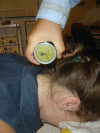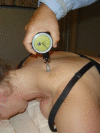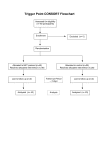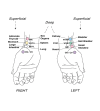Neuro Emotional Technique for the treatment of trigger point sensitivity in chronic neck pain sufferers: a controlled clinical trial
- PMID: 18495042
- PMCID: PMC2427032
- DOI: 10.1186/1746-1340-16-4
Neuro Emotional Technique for the treatment of trigger point sensitivity in chronic neck pain sufferers: a controlled clinical trial
Abstract
Background: Trigger points have been shown to be active in many myofascial pain syndromes. Treatment of trigger point pain and dysfunction may be explained through the mechanisms of central and peripheral paradigms. This study aimed to investigate whether the mind/body treatment of Neuro Emotional Technique (NET) could significantly relieve pain sensitivity of trigger points presenting in a cohort of chronic neck pain sufferers.
Methods: Sixty participants presenting to a private chiropractic clinic with chronic cervical pain as their primary complaint were sequentially allocated into treatment and control groups. Participants in the treatment group received a short course of Neuro Emotional Technique that consists of muscle testing, general semantics and Traditional Chinese Medicine. The control group received a sham NET protocol. Outcome measurements included pain assessment utilizing a visual analog scale and a pressure gauge algometer. Pain sensitivity was measured at four trigger point locations: suboccipital region (S); levator scapulae region (LS); sternocleidomastoid region (SCM) and temporomandibular region (TMJ). For each outcome measurement and each trigger point, we calculated the change in measurement between pre- and post- treatment. We then examined the relationships between these measurement changes and six independent variables (i.e. treatment group and the above five additional participant variables) using forward stepwise General Linear Model.
Results: The visual analog scale (0 to 10) had an improvement of 7.6 at S, 7.2 at LS, 7.5 at SCM and 7.1 at the TMJ in the treatment group compared with no improvement of at S, and an improvement of 0.04 at LS, 0.1 at SCM and 0.1 at the TMJ point in the control group, (P < 0.001).
Conclusion: After a short course of NET treatment, measurements of visual analog scale and pressure algometer recordings of four trigger point locations in a cohort of chronic neck pain sufferers were significantly improved when compared to a control group which received a sham protocol of NET. Chronic neck pain sufferers may benefit from NET treatment in the relief of trigger point sensitivity. Further research including long-term randomised controlled trials for the effect of NET on chronic neck pain, and other chronic pain syndromes are recommended.
Trial registration: This trial has been registered and allocated the Australian Clinical Trials Registry (ACTR) number ACTRN012607000358448. The ACTR has met the requirements of the ICMJE's trials registration policy and is an ICMJE acceptable registry.
Figures













References
-
- Simons DG, Travell JG, Simons LS. Travell and Simons' Myofascial Pain and Dysfunction: The Trigger Point Manual. 2. Baltimore: Williams and Wilkins; 2002.
-
- Gerwin RD. Myofascial and Visceral Pain Syndromes: Visceral-Somatic Pain Representations. J Musculoskeletal Pain. 2002;10:165–175. doi: 10.1300/J094v10n01_14. - DOI
-
- Fischer AA. Pressure threshold meter: its use for quantification of tender spots. Arch Phys Med Rehabil. 1986;67:836–838. - PubMed
LinkOut - more resources
Full Text Sources
Miscellaneous

